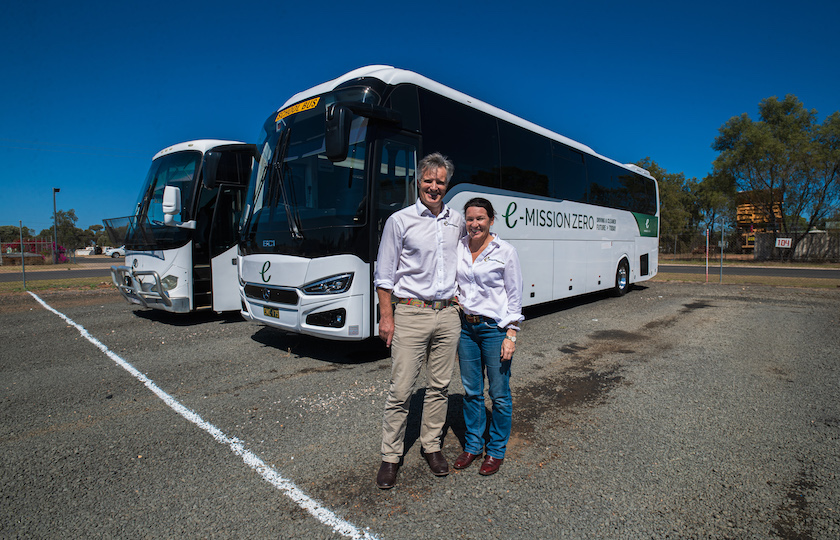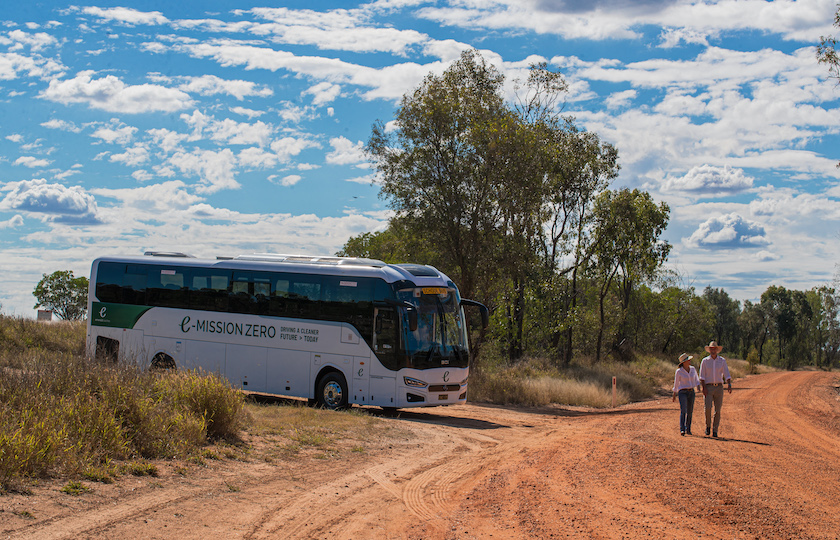An Australian bus company that currently uses more than 1 million litres of diesel fuel a year has committed to converting its entire fleet to hydrogen fuel cell-powered vehicles.
But – reflecting the challenges facing transport companies of any scale in converting vehicles – the program will take 18 years to complete and cost upwards of A$100 million. The plan means its entire fleet will produce zero emissions – a decade before the Australian government’s net-zero emissions target.
Queensland-based Emerald Coaches currently runs a fleet of 120 buses, providing charter transport services, including school runs. Next year, the company will deploy its first two vehicles next year (with one already undergoing testing). By the end of next year, 1 million passenger trips will have already been made using hydrogen cell fitted buses.
Green hydrogen will be produced at Emerald Coaches using rainwater captured onsite with a solar-powered electrolyser generating hydrogen to power the entire fleet.
“Australia’s transport industry is one of the most energy-intensive in the world,” said Emerald Coaches Director, Michael Baulch, explaining the transition to green energy.
“We believe renewable hydrogen is the future of the transport industry. It’s a natural gas that is extracted from water, making it a completely clean and sustainable fuel source. The only thing to come out of the exhaust is water.”
Right now, Emerald coaches’ fleet produces around 3100 tonnes of greenhouse emissions annually. Besides the environmental benefits, Baulch says the project will provide the 40-year-old company with complete fuel security and price stability once the transition is complete.

“By leading the way and being the first to commit to zero emissions, we are hoping to have a positive impact on our community and our team and encourage other business sectors to consider doing things differently,” said fellow director Rachael Baulch. “There will be many opportunities to provide jobs and ongoing education in a completely new and innovative space, right here in Emerald.”
How hydrogen fuel cells work
Hydrogen, the most abundant element on the planet, is found in water. After being extracted via an electrolyser, the elements of hydrogen and oxygen are separated, with the hydrogen being converted into electricity through a hydrogen fuel cell to power the vehicle.
The key benefit of hydrogen fuel cells over battery-powered electric vehicles is range and refuelling time.
Emerald Coaches’ hydrogen-powered buses will have a range of 800km and take just 10 minutes to refuel. That compares with 440km and a refuelling time of more than three hours for an electric alternative.
Besides the country’s hydrogen commitment, Emerald Coaches is implementing other energy-efficiency measures to help it reach its target of using 100 per cent renewable electricity and water in its facilities by 2025. That includes 100-per-cent renewable power, recycling and rainwater systems, paperless office systems and water-efficient mobile vehicle washing units.
Hydrogen fuel cells are being considered to power other means of transport as well – like the Airlander airships currently being developed in the UK.



